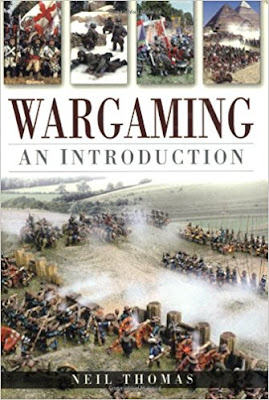Orders of Battle:
The Romans:
4 units of Legionaries (Elite, Heavy Armour)
1 unit of Skirmishers (Raw, Light Armour, Slings)
1 unit of Cavalry (Heavy Cavalry, Average, Medium Armour)
The Gauls:
4 units of Warriors (Average, Light Armour)
2 units of Skirmishers (Raw, Light Armour, Javelins)
2 units of Cavalry (Heavy Cavalry, Elite, Medium Armour)
The Set-Up:
 |
| The Romans advancing into those woods again, again led by their skirmishers; Gallic warriors and skirmishers await them |
 |
| And again, the balance of the Gauls lies in wait just out of sight to the flank |
 |
| A plan view of the Romans entering the woods |
The Battle:
 |
| Meanwhile, the remainder of the Gallic warriors and the Gallic cavalry come charging around the flank |
 |
| Losses continue to mount on both sides in the wood, although Gallic morale has proved a little brittle and this has helped the Romans... |
 |
| The Legionary line braces for impact... |
 |
| It is fairly even in the cavalry fight; but the superior Legionaries are doing very well against the Gallic warriors. |
 |
| The Romans just held on to triumph in the woods. This unit of legionaries supports an equally reduced unit of skirmishers in chasing off the last Gallic skirmishers |
 |
| It is beginning to look pretty grim for the Gauls now... |
 |
| The woods are nearly clear; but the Romans are still taking annoying casualties from those Gallic skirmishers! |
 |
| Pursuing the javelinmen... |
 |
| These Romans have just about forced their Gallic tormentors out of the woods |
 |
| The last Gallic foot warriors have routed, but the Gallic cavalry is still hanging on... |
 |
| Until it isn't! The Gauls, although still just short of an automatic loss are really defeated at this point. |
 |
| And the last of the wood is cleared. |
Game Notes: As ever, a good game with Neil Thomas' rules and an interesting contrast with the previous SPQR game. The game illustrated the differences well: the "no command" mechanic does speed up play and reduce brain workload, at the cost of some credibility - all the moves (on both sides) were a bit too co-ordinated. As a contest, this doesn't matter too much, but obviously that is of no concern as a solo player; as a convincing narrative of how Roman and Gallic armies could fight, it doesn't really work so well. The skirmishers are effective and their use is really easy and intuitive - this is a huge difference with SPQR (and DBA for that matter); because of the more attritional combat mechanics in Neil Thomas, those skirmishers really are annoying for the Roman general, in a way in which they really weren't in the previous SPQR game.
Those with the Neil Thomas rules might be wondering how the Romans managed to put up such a good show in the woods. In truth, they were a little lucky, but the odds are much closer than you might imagine if you don't look past the extra effectiveness of Warbands in woods. Essentially, Warbands get two attack dice per base in woods, Legionaries only get one. BUT, the Roman armour is likely to avoid 50% of those hits, whilst the Gallic armour will reduce the expected Roman hits by only 16%; and on top of that, veteran legionaries have only a 1-in-3 chance of losing an extra base in a morale check, average warbands have a 50-50 chance. The combination of this makes it quite an even fight really.
The difference in combat models between rulesets has a real effect on the timescale of melees; they can often last quite a long time in Neil Thomas, as units become smaller and less effective, they tend to simultaneously dish out a lot less damage; this makes reserves and fresh troops realistically very valuable but one wonders if the long combats otherwise are quite convincing. I am wondering about a couple of minor changes to the rules which might have some effect on this. These are to take morale tests for bases losses as a result of missile fire as well as melee and to force another morale test for each failed morale test. The latter would work like this:
Unit loses a base
Unit takes a morale check, fails, loses another base.
Because the unit lost another base it takes another check, loses another base.
And so on.
Figures by Baccus 6mm.
My review of Polemos: SPQR
My review of Wargaming: An Introduction



Nice comparison between the two games. How does Thomas’ Introduction differ from his AMW?
ReplyDeleteThanks very much.
ReplyDeleteThere is not much difference between the two Neil Thomas' sets. There are some extra troop types in AMW (Auxiliary Infantry, Light Chariots, Scythed Chariots, Slingers) and some marginal changes in troop abilities (Warbands are slightly more effective). There are much greater differences in the other periods covered by the AMW ruleset, but this "classical" period of warfare is very close.